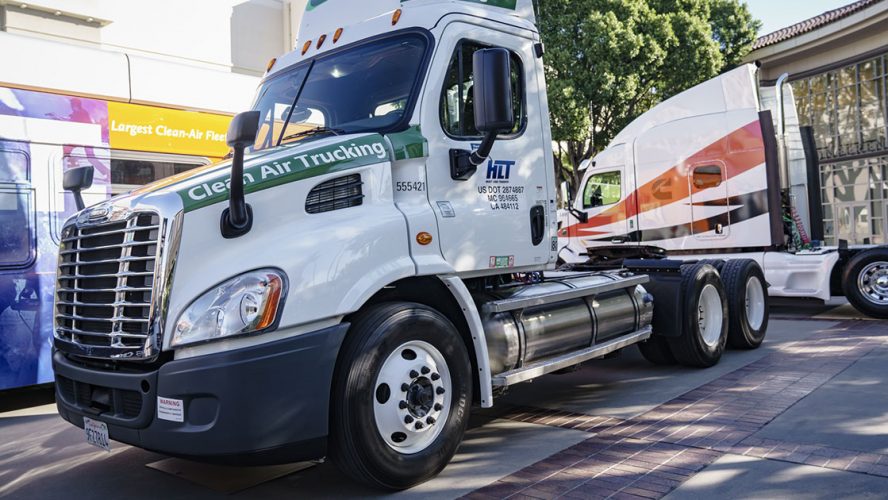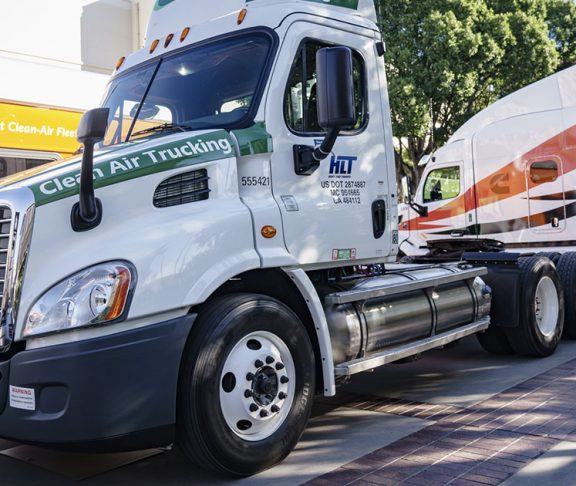Trucks and buses are to blame for 19 percent of California’s greenhouse gas emissions. The solution? Use new electric, natural gas and hybrid trucks and buses to help reduce those emissions.
Back in 2009, The California Air Resources Board (CARB) partnered with CALSTART, a non-profit industry organization focused on supporting and growing clean transportation technologies to launch the Hybrid and Zero-Emission Truck and Bus Voucher Incentive Project (HVIP) and Low NOx Engine Incentives to speed up the purchase of cleaner, more efficient trucks and buses in the state.
How it works
HVIP provides point-of-sale discounts to vehicle purchasers. That means there’s no waiting for a rebate check or a tax credit. The voucher is a first-come, first-serve incentive, and it’s working.
California is leading the way to make commercial vehicles, clean vehicles. The program is nationally recognized as a model for other states.
Over a thousand fleets are participating across California, which helps the state meet its clean air goals. So far, more than 2,700 medium-to-heavy-duty vehicles have been deployed, which has fast-tracked the growth of the market of zero-emission and hybrid trucks and buses by 30 percent.
Fleet managers see the benefits of clean trucks.
“They tend to be less expensive to operate, they’re more efficient and you spend less money on electricity or natural gas than you would on diesel fuel,” says Tom Brotherton, regional director for CALSTART, who calls this a “huge win” for sustainability goals.
Next steps
HVIP helps the environment and the transportation industry.
“Fleet owners that utilize financial incentives like HVIP to adopt these technologies now will be poised to reap the most economic benefits in the future,” says Lacy V. Buckingham, regional grant manager for Rush Enterprises, Inc., which owns and operates Rush Truck Centers, the largest network of commercial vehicle dealerships in the United States.
“The funding will not be around forever, so my recommendation is for fleets to get started today, take advantage of this great funding opportunity.”
She says fleets should consider innovative transportation options like CNG trucks and Hino Hybrid trucks.
There are “clean fleet” advantages too. Companies can get additional business for their green efforts, such as municipal refuse contract or a private developer’s construction contract.
This investment can save money for clean fleets. The Ports of Los Angeles and Long Beach have adopted a new Clean Air Action Plan (CAAP) that will impose new container fees in 2020 on all trucks that are not Low NOx or zero emissions.
Cleaner and greener
Everyone benefits from better air quality.
“Breathing clean air is not a Democratic or a Republican issue,” says Republican Rep. Ken Calvert, in a recorded video for CALSTART’s annual symposium. “It’s a non-partisan issue.”
Calvert, an advocate for clean air projects and programs, says, “Investment in proven technologies that transform and lessen the impact of pollution sources are critical to improving the health of communities.”
Visit www.californiahvip.org to learn more.
Kristen Castillo, [email protected]


